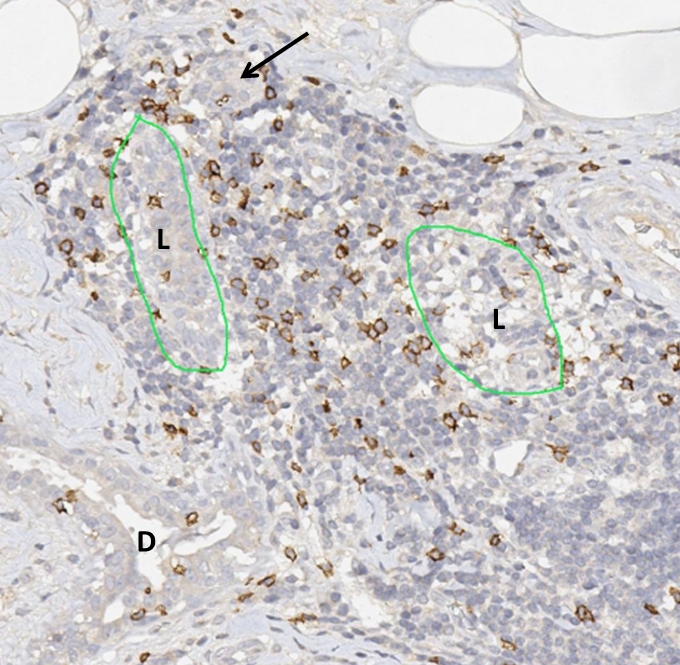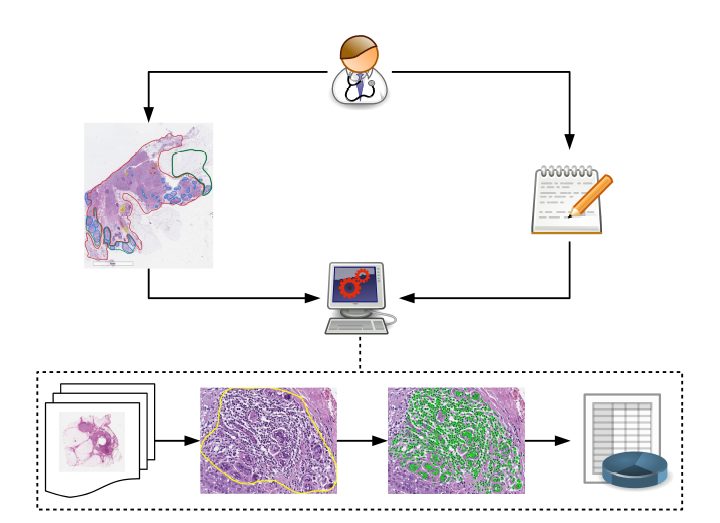SP 4
Prognostischer Wert der entzündlichen Reaktion auf erblichen Brustkrebs mit Fokus auf lymphozytäre Lobulitis
A common feature of hereditary breast cancer is a prominent inflammatory infiltrate that can be observed directly adjacent to the tumor, or in more distant parts of the normal mammary gland. This inflammation of normal mammary gland lobules, often referred to as lymphocytic lobulitis, is sometimes even detected before a malignant tumor is established, in prophylactically removed breast tissue of women with exceptionally high familial risk who decide to take this step in order to prevent cancer onset. This project evaluates the prognostic value of inflammatory reactions to familial breast cancer, and aims at using this phenomenon as a diagnostic marker for risk estimation. We use a novel approach of knowledge-based image analysis, a method that has been recently established in geosciences to analyze satellite-based remote sensing image data of the earth surface adopted to the requirements of digital microscopic image analysis. Complex pattern recognition in digital histopathology images is joined with sytems biology-based evaluation of clinical, serological, and genomic data.

The approach is based on the analysis of fully digitalized histological sections, called whole slide images (WSI), a technology that opens novel perspectives but also brings up challenges regarding data and image management, and computational power for image processing. The novel analysis workflow will be tailored to the specific requirements of clinical applications I in two retrospective, and one prospective cohort of familial breast cancer patients, always with focus on lymphocytic lobulitis. Particular attention is given to temoral and spatial aspects, since inflammatory responses are highly dynamic three-dimensional processes, of which a histological section can, by definition, only reflect a two-dimensional „snapshot“. To this end, we collaborate closely with subproject 3, which establishes a spatially and temporally variable model of relevant aspects underlying lymphocytic lobulitis. We expect that the comprehensive analysis integrating the spatio-temporal dimension with conventional biomedical data analysis will lead to a better mechanistic understanding of lymphycytic lobulitis and inflammatory tumor infiltration, result in novel prognostic markers and may enable targeted immunomodulatory therapy approaches in familial breast cancer.




